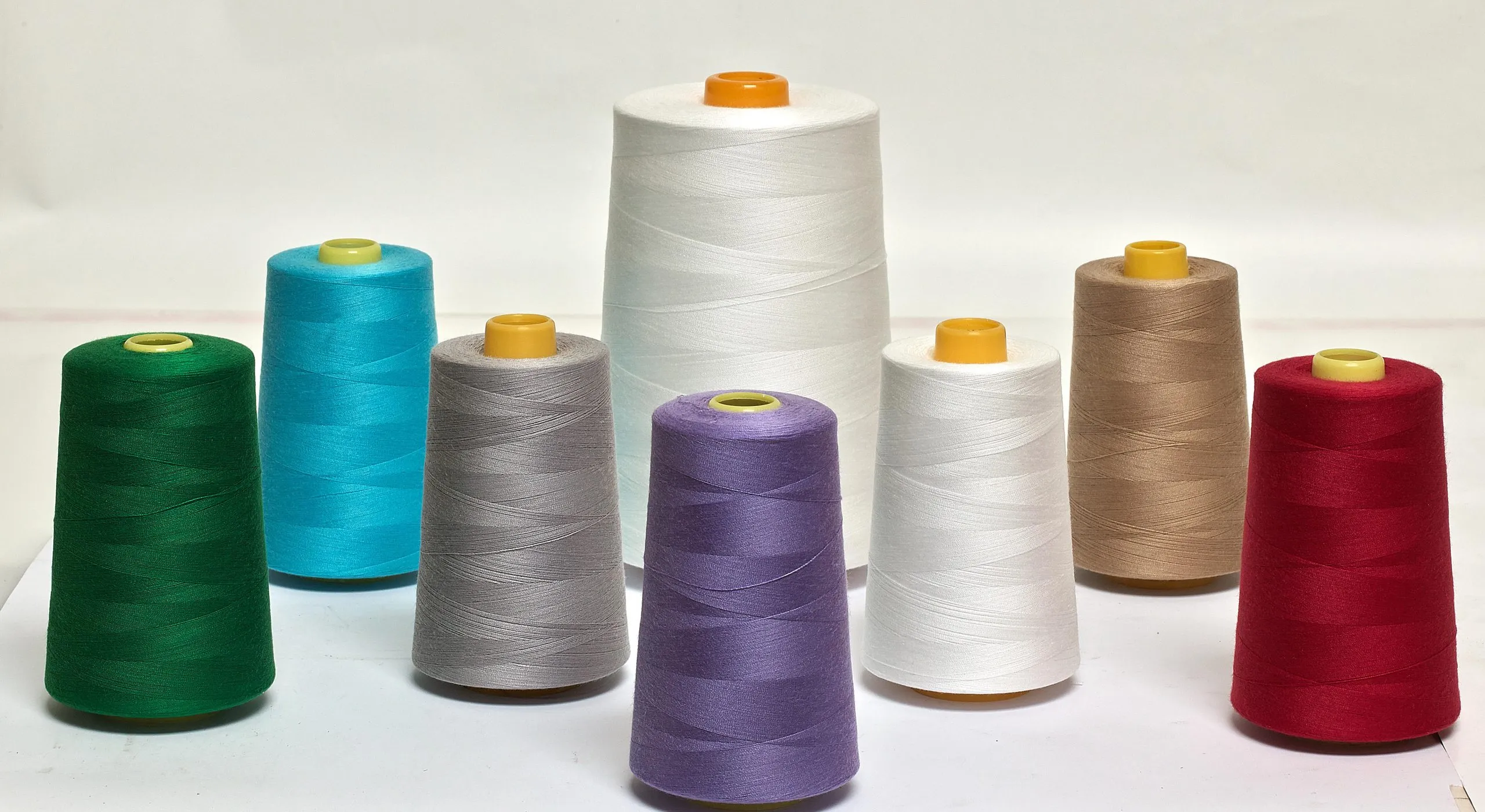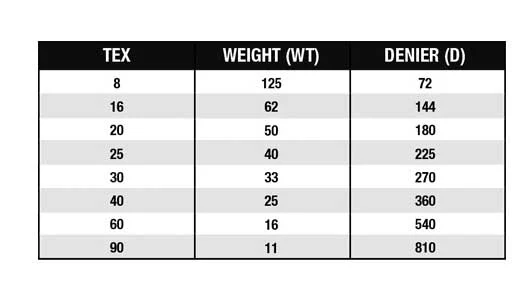
Synthetic fabrics have become one of the most widely used material groups in modern textiles. They are strong, versatile, and easy to care for, which makes them popular in everything from everyday clothing to high-performance gear. Because they are engineered through science, they can be designed to offer benefits that natural fibers cannot always provide. Today, synthetic fabrics appear in fashion, sportswear, furniture, medical materials, and even technical industrial applications.
What Are Synthetic Fabrics?
Synthetic fabrics are man-made textiles created through chemical processes, usually derived from petroleum-based compounds. Unlike natural fibers that come from plants or animals, synthetic fibers are engineered for specific performance needs. This means manufacturers can adjust strength, elasticity, texture, or resistance depending on the intended use. As a result, synthetic fabrics tend to be durable, affordable, and highly adaptable.

Synthetic fabrics first emerged in the early 20th century as scientists searched for new materials that were cheaper, stronger, and easier to produce than traditional fibers. Most synthetic fibers start as liquid polymers, which are transformed into thin filaments through a process called extrusion. These filaments are then spun into yarns and woven or knitted into fabric. Because the entire process is controlled, each synthetic fiber can be tailored to perform well in specific conditions such as moisture, heat, or physical stress.
How Are Synthetic Fabrics Made?
The creation of synthetic fabrics begins in laboratories and chemical plants, not in farms or fields. Manufacturers use chemical reactions to form long chains of molecules called polymers, which act as the base material. These polymers are melted, pushed through tiny holes, and stretched into strong filaments. The result is a fiber that can be produced consistently, in large volumes, and with precise performance qualities. The production process often includes four main stages: polymerization, spinning, drawing, and finishing.
- Polymerization: Raw chemicals react to form polymer chips or liquids.
- Spinning: Polymers are melted and extruded into thin filaments.
- Drawing: Filaments are stretched to increase strength and durability.
- Finishing: Fibers may be textured, dyed, coated, or blended for final performance.
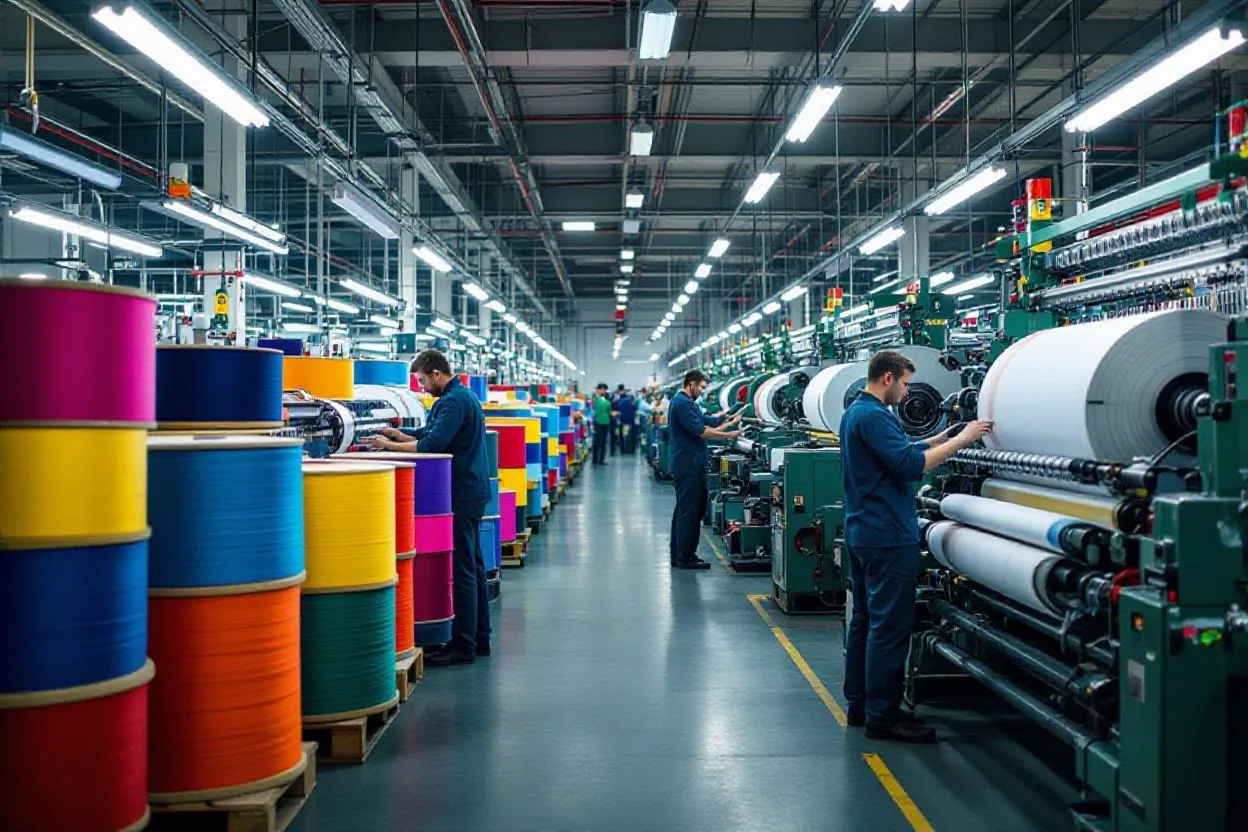
This method allows for a wide variety of textures from silk-like smoothness to wool-like warmth making synthetic fabrics extremely flexible for designers.
Polymerization:
You begin with polymerization making long PET chains from ethylene glycol and terephthalic acid or nylon from caprolactam then the molten polymer is extruded through spinnerets with holes often around 100 μm to form filaments. Next you draw those filaments (commonly 3–6× their original length) to align molecules and boost strength, spin them into yarn, and apply finishing treatments like dyeing, water-repellent coatings, or anti-odor finishes; recycled PET from bottles is also used.
Spinning:
After polymerization, the molten polymer is pushed through a metal plate called a spinneret. This plate has many tiny holes often around 100 micrometers wide that shape the liquid into long, thin filaments. As the filaments leave the spinneret, they cool and solidify, forming the very first version of the fiber. Different spinning methods such as melt spinning, dry spinning, or wet spinning may be used depending on the type of polymer.
Drawing:
Once the filaments are formed, they are stretched usually three to six times their original length. This step is called drawing. Stretching helps the molecules line up more neatly inside the fiber, which greatly increases strength, durability, and elasticity control. Proper drawing also improves the fiber’s stability so it will not shrink or deform easily during use.
Finishing:
After drawing, the fibers enter the finishing stage. Here they may be textured to create bulk, softness, or a wool-like hand feel. They can also be dyed, heat-set, coated, or blended to give the fabric its final performance features. Common finishes include water-repellent coatings, UV protection, anti-odor treatments, stain resistance, and softening agents. Recycled materials, such as recycled PET from plastic bottles, can also be spun, drawn, and finished the same way to create high-quality yarns with a lower environmental footprint.
Types of Synthetic Fabrics
There are many kinds of synthetic fabrics, each offering a different set of benefits. Some are made to feel soft and warm, while others focus on durability or stretch. Because they are engineered, each fabric type can serve a unique purpose in clothing, sports, home goods, or industrial uses. Below are the most common types found in the textile world.
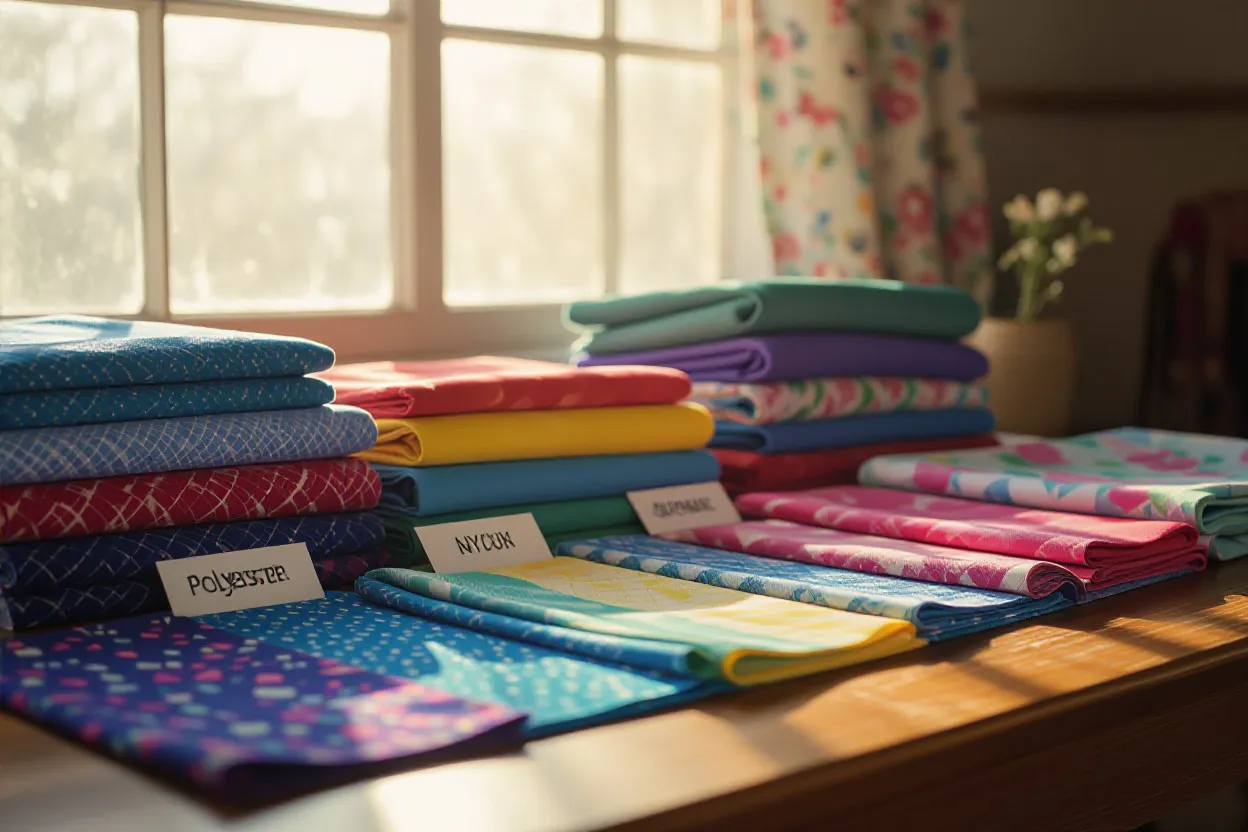
- Polyester: Polyester is the most widely used synthetic fabric in the world. It is strong, wrinkle-resistant, quick-drying, and easy to care for. It holds color well and blends easily with cotton or other fibers. Polyester appears in fashion, uniforms, curtains, linings, and sportswear.
- Nylon (Polyamide): Nylon is known for excellent strength, abrasion resistance, and a lightweight feel. It was originally invented as a silk substitute but quickly expanded into outdoor and activewear uses. Nylon is ideal for jackets, swimwear, ropes, tents, and durable workwear. Its toughness makes it popular in both fashion and industrial sectors.
- Acrylic: Acrylic is designed to mimic the softness and warmth of wool. It is lightweight, warm, and resistant to moths, making it great for knitwear. You often see acrylic in sweaters, scarves, blankets, and winter accessories. It offers a wool-like feel without the cost or care requirements of real wool.
- Elastane (Spandex / Lycra): Elastane is famous for its extreme stretch up to 500% of its original length. It helps clothing fit better, move better, and feel more comfortable. Elastane is nearly always blended with other fibers. It appears in activewear, leggings, swimwear, underwear, and any garment that requires flexibility.
- Rayon is a semi-synthetic fiber produced from wood pulp and classified as a regenerated fiber. It feels soft, breathes well, and offers a smooth, elegant drape. Thanks to these qualities, rayon is commonly used for dresses, blouses, linings, and many other apparel items.
- Polypropylene: Polypropylene is a thermoplastic polymer widely used across many industries, including textiles. It’s light in weight, resists moisture, and provides solid insulation. Because of these traits, polypropylene fabrics often appear in activewear, thermal base layers, and disposable medical clothing.
- Polyethylene: Polyethylene fibers are used to make fabrics that offer notable strength and strong water resistance. Because of these features, they’re commonly found in outdoor furniture, camping equipment, and waterproof clothing.
Key Advantages & Disadvantages of Synthetic Fabrics
Main Advantages:
Synthetic fabrics became popular because they solve everyday problems that natural fibers sometimes cannot. They resist wrinkles, dry quickly, and handle repeated washing without losing shape. These qualities make them ideal for busy lifestyles. They also tend to be more affordable, making them accessible to a wide range of consumers.
- High durability: Great resistance to tearing, abrasion, and stretching.
- Easy care: Most synthetics are machine washable and wrinkle-resistant.
- Moisture management: Many synthetics dry faster than cotton.
- Affordable: Lower production cost than natural fibers.
- Engineered performance: UV protection, water resistance, insulation, and more.
Main Disadvantages:
While synthetic fabrics offer many benefits, they also come with several drawbacks that are important to consider. These materials are created through chemical processes, so their behavior is different from natural fibers. Some of these differences can affect comfort, breathability, and overall wear experience. Understanding these limitations helps you choose the right fabric for each situation and avoid unwanted surprises.
- Lower Breathability: Synthetic fabrics often trap heat and moisture, making them feel warm or sticky. They do not allow air to flow as well as natural fibers. This can reduce comfort, especially in hot weather.
- Static Cling: They build up static electricity easily, causing clothes to cling to the body. This can attract dust and lint and feel annoying in dry conditions.
- Less Skin-Friendly: Some synthetics can feel rough or irritate sensitive skin. They may trap sweat, which increases friction and discomfort.
- Environmental Impact: Most synthetics come from petroleum and do not biodegrade quickly. Washing them can release microplastics into the environment.
- Heat Sensitivity: High heat from irons or dryers can melt or damage synthetic fabrics. They require careful handling during washing and drying.
- Odor Retention: Sweat and bacteria can get trapped in the fibers, causing odors to build up faster than in natural fabrics.
- Low Moisture Absorption: They do not absorb sweat well, which can make the skin feel damp or sticky during activity.
Uses of Synthetic Fabrics
Because synthetic fabrics are strong and versatile, they appear in many industries beyond fashion. Designers appreciate their consistency and wide range of textures. Manufacturers value their durability and low cost. This combination has helped synthetic fabrics become essential in everyday consumer products.
- Fashion & Apparel: T-shirts, dresses, trousers, Sportswear and athleisure, Swimwear, socks, underwear, Outerwear, windbreakers, puffer jackets…
- Home & Furniture: Upholstery, Curtains, Bedsheets, Rugs…
- Industrial & Technical Uses: Medical textiles, Insulation material, Seatbelts, ropes, Filters and protective equipment…

Final Words / Conclusion
Synthetic fabrics have shaped the textile industry with their strength, versatility, and affordability. While natural fibers still hold an important place, synthetics offer features that modern lifestyles rely on, such as stretch, quick drying, and durability. With better recycling technologies and sustainable sourcing options like deadstock, synthetic fabrics can continue to provide value while reducing their environmental impact. Understanding how they are made and where they are used helps buyers, designers, and brands make smarter choices for the future.
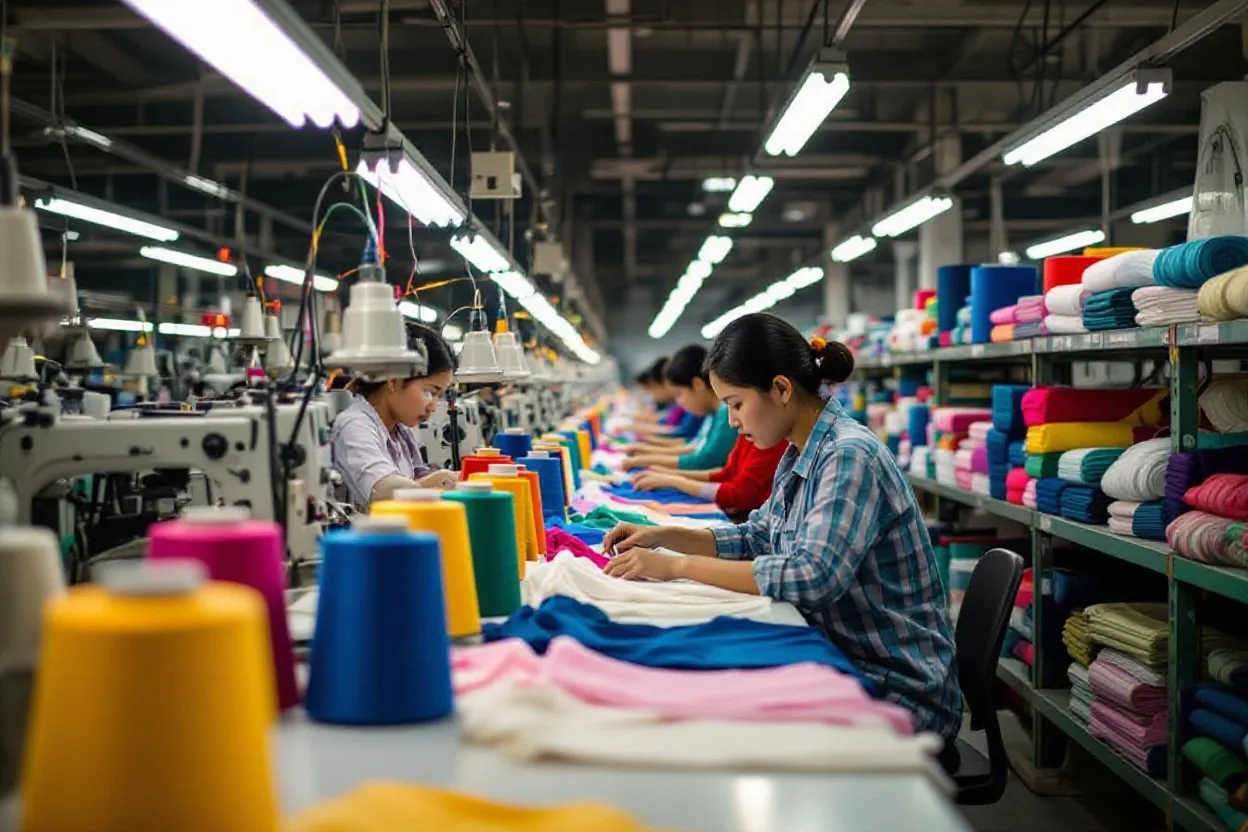
FAQs About Synthetic Fabrics: What They Are, Types, and Uses
In short, What are synthetic fabrics?
Synthetic fabrics are man-made materials created through chemical reactions, not grown from plants or animals. Most of them come from petroleum, which is turned into liquid polymers and then shaped into fibers. Because the process is controlled, manufacturers can decide how strong, stretchy, or smooth the fibers should be. This helps synthetic fabrics work well in many different products.
Are synthetic fabrics better than natural fabrics?
In some ways, yes. Synthetic fabrics are usually stronger, more wrinkle-resistant, and easier to wash. They also dry faster and often cost less. However, natural fabrics like cotton and linen breathe better and feel softer on the skin, which makes them more comfortable in hot weather.
Why are synthetic fabrics so common?
Synthetic fabrics are popular because they are versatile and affordable. They can be made in large quantities with consistent quality. Designers also like them because they can add special features, such as stretch, shine, water resistance, or a soft, fuzzy texture. This makes them useful for fashion, sportswear, furniture, and even medical products.
Do synthetic fabrics make you sweat more?
Some of them do, especially the cheaper types. Many synthetic fibers do not let air pass through easily, so heat and moisture stay close to the skin. This can make you feel warm or sticky. High-performance fabrics use special technology to pull sweat away from the skin, but not all garments include this feature.
Are synthetic fabrics bad for the environment?
They can have a negative impact. Synthetic fabrics take a very long time to break down in nature because they are made from plastic-like materials. When washed, they release tiny plastic fibers called microplastics, which can pollute rivers and oceans. However, recycled polyester and nylon are improving the situation by reducing waste.
Can synthetic fabrics cause skin irritation?
Yes, especially for people with sensitive skin. Some synthetic fabrics trap heat and sweat, which can lead to redness or itching. Certain chemical finishes, like dyes or coatings, may also irritate the skin. Washing new clothes before wearing them helps reduce these effects.
What clothes commonly use synthetic fabrics?
Many everyday items use synthetics because they are strong and flexible. You’ll find them in T-shirts, leggings, dresses, jackets, socks, swimsuits, and sportswear. They are also common in home products like curtains, pillow covers, and upholstery. Their durability makes them useful for both fashion and home living.
Do synthetic fabrics hold odors?
Yes. Synthetic fibers do not absorb moisture well, so sweat stays on the surface. Bacteria can grow in this warm, moist environment and cause bad smells. Some fabrics include anti-odor finishes, but many basic garments do not.
Are synthetic fabrics easy to wash?
Yes, very easy. Most synthetic fabrics resist shrinking and wrinkling, so they look good even after many washes. They dry quickly and often need no ironing. This makes them convenient for busy routines and travel.
Can synthetic fabrics be recycled?
Some types, like polyester and nylon, can be recycled and turned into new fibers. Recycling reduces waste and saves energy compared to creating new plastic. Many brands now use recycled polyester made from plastic bottles or old fabrics. However, not all cities or factories have the equipment needed for textile recycling.

